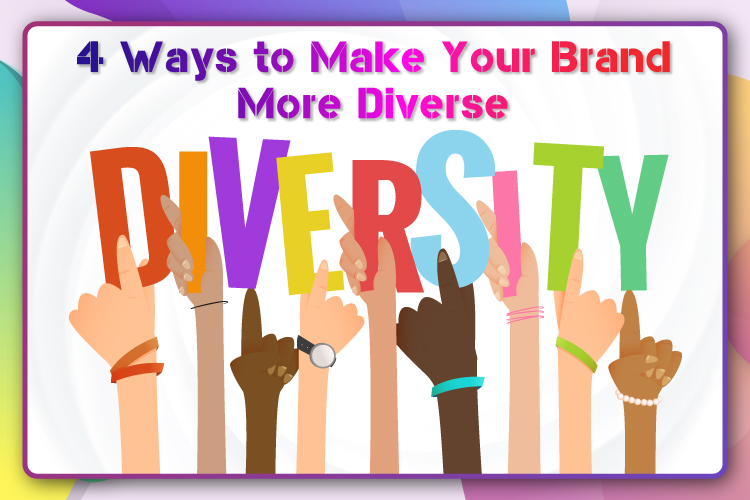4 Ways to Make Your Brand More Diverse

Even though the want for diverse and inclusive branding is not something new, it has become clear enough that today’s customers want and expect brands to feature real people who showcase the complete varieties of race, ethnicity, ability, and orientation. Truly committing to diversity is not just about highlighting varied faces in marketing campaigns; it is much much more than that. Brands need to go beyond that and see if their products are inclusive and look at their workforce and hiring methods honestly.
Diverse representation is not just important for ethical and social reasons but also for business. So how do you make your brand more diverse? Let’s dive into the details.
Start working with diverse creators.
With the increasing popularity of user-generated content and influencer marketing, it has become easier now than ever for brands to connect with more varied content creators. So, the best way to make your marketing more authentic and diverse is by turning to your followers and fans. User-generated content (UGC) is truly effective because it features real people and voices, and that is one of the reasons it is so popular today.
The audience in today’s world wants to see people like them in ads and branded content. Collaborating with diverse content creators is an excellent way to reach all your customers. Creators are constantly making new UGC and all thanks to the technology for generating high-quality visuals. Moreover, UGC has a huge ROI that not only increases your ad performance but also enhances online conversions and boosts brand engagement across all social media platforms.
Since everyone with an internet connection can access social media platforms, content creators on these networks come from varied backgrounds, communities, and races. Prioritize connecting with such influencers and content creators and work with them to build campaigns that tell your brand story and theirs, authentically.
Go beyond your target demographics.
You might think that you are reaching all your potential customers, but that’s unlikely. Consumers want to see themselves in your advertising materials, and for niche groups and underrepresented communities, that rarely happens. If customers don’t feel like your products or services are for them, they wouldn’t want to purchase from you.
Being representative in your advertising goes beyond just selecting some stock images that check specific boxes. You need to craft a message that focuses on inclusion—making your brand more diverse means understanding your broader audience and thinking beyond your target demographics. Working with people from demographics that are currently left out of your marketing will be a good step.
Spend time listening, learning, and understanding the nuances that might exist. Analyze your marketing campaigns and see if any of them are disproportionately representing any group. Brainstorm ideas to adapt your message and authentically reach a more diverse audience.
Start hiring diverse talent.
The change begins from within. Having a diverse team will bring more varied viewpoints on the table, including those who have personal experiences of different demographics. Commit to diverse hiring first and have a look at your organization’s demographics honestly.
Focus on hiring people based on their experiences and knowledge for open roles and build a work culture that offers equal growth opportunities for all.
Market authentically.
We know that inclusion and diversity are good for business and brand reputation, but the customers are intelligent enough to realize when a company is just paying lip service. The reason why user-generated content is so effective is that it is genuinely authentic. It highlights real people and stories and reflects more transparency in advertising, which is exactly what consumers desire.
More and more brands are turning to UGC to show real people interacting with their products or services authentically. Source content from diverse creators who do not necessarily have to be people with the most number of followers and influencers representing a broad spectrum of backgrounds and experiences. Focus on building long-term relationships with underrepresented groups instead of just sharing their content to grab more engagement.
Customers value transparency and authenticity, which also depends on how the brand makes its products and marketing more diverse and inclusive. Brands need to truly commit to making long-lasting changes in their marketing, working, and hiring practices.
Conclusion
Making your brand diverse is not just about good business; it is the right and responsible thing to do. When you make your brand diverse, it automatically builds a personal connection with your audience, which in turn has a positive impact on every aspect of your business. It requires a genuine commitment to making significant changes to make your brand genuinely diverse. From working with diverse content creators to changing your hiring ways to ensure that you establish the right culture to crafting a brand message that resonates with the entire audience base, it takes effort, but it is worth every bit of it.
